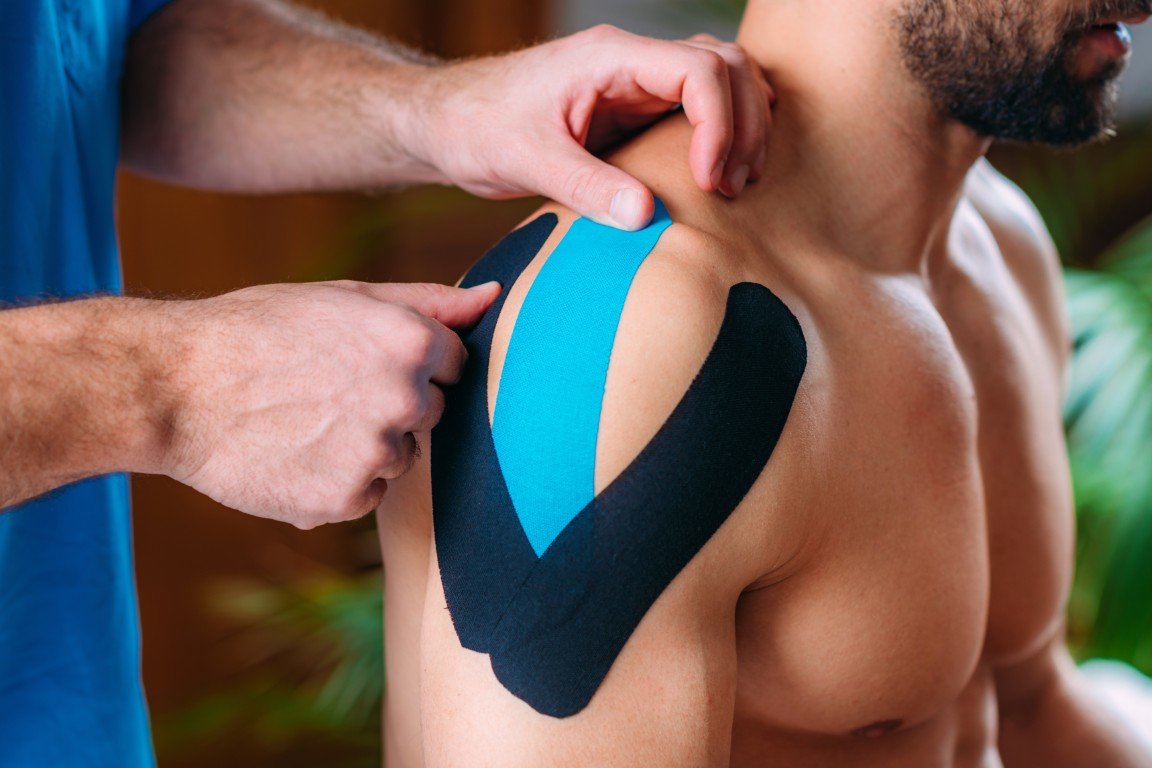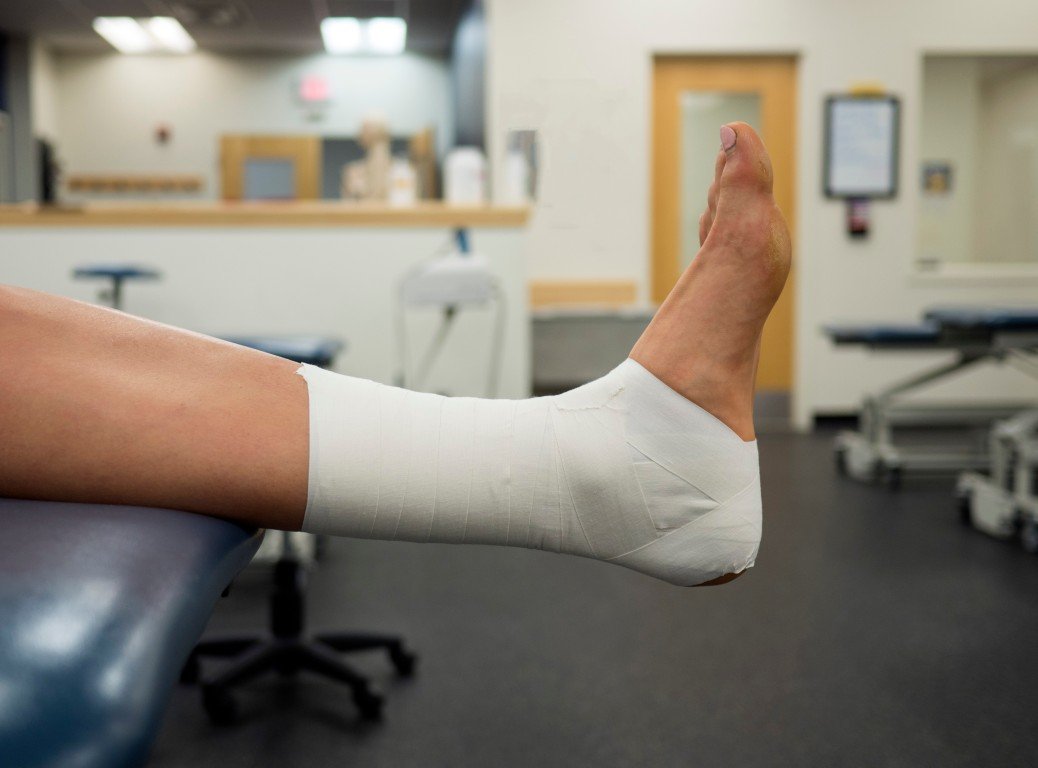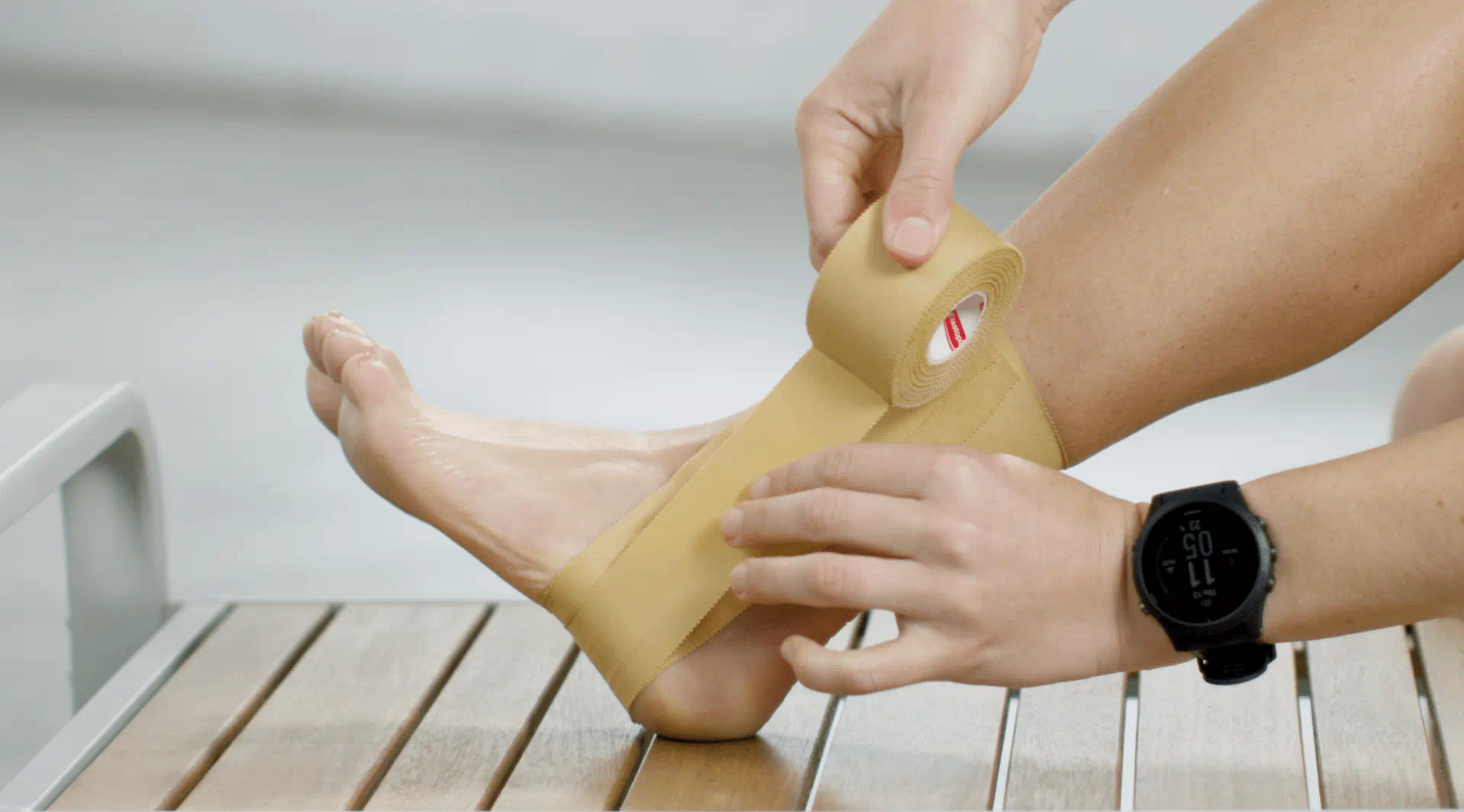Sports Taping at Well Motion Physiotherapy & Allied Health
At Well Motion Physiotherapy & Allied Health, we specialize in Sports Taping, a versatile technique used for injury prevention, pain relief, and rehabilitation support. Whether you’re recovering from an injury or aiming to enhance your performance, sports taping offers the stability and support your body needs to perform at its best.
What is Sports Taping?
Sports taping involves applying adhesive tape to specific areas of the body to provide support, limit movement, and protect muscles, joints, and ligaments during physical activity. It is used both to prevent injuries and assist with recovery from existing injuries, promoting faster healing and reducing the risk of further damage.
Sports taping allows for flexibility and movement while providing essential support to vulnerable areas. This technique is widely used by athletes and active individuals alike to maintain functionality while preventing or managing musculoskeletal injuries.


Types of Sports Taping:
At Well Motion, we utilize several types of sports taping techniques to meet the unique needs of each individual. These include:
- Rigid Taping
This type of tape is used to immobilize a joint or body part, providing maximum support. Rigid taping is ideal for stabilizing areas affected by sprains, strains, or ligament injuries. It restricts excessive movement and helps prevent further damage to the injured area, especially in the early stages of recovery. - Elastic Therapeutic Taping
This flexible and stretchy tape is used for pain relief, reducing swelling, and supporting muscles and joints without restricting movement. Elastic therapeutic taping is commonly used for muscle injuries, tendonitis, and joint instability. It enhances circulation and supports the healing process by providing gentle support while allowing for full range of motion. - Knee Taping
Knee taping techniques focus on stabilizing the knee joint and reducing pressure on ligaments and tendons. It is particularly useful for individuals with knee pain, patellar instability, or overuse injuries. Taping helps control knee movement while allowing the muscles to perform their normal function. - Ankle Taping
Ankle taping provides support and stability to the ankle joint, reducing the risk of sprains or strains. It is frequently used by athletes in sports with high-impact or high-turning movements. Ankle taping helps prevent excessive inversion and eversion of the foot, reducing the chances of injury and enhancing performance. - Taping for Tendonitis
Tendonitis is inflammation of the tendons, often resulting from repetitive stress. Taping for tendonitis supports the affected tendon and reduces strain, promoting healing. This type of taping is particularly useful for conditions such as tennis elbow, golfer’s elbow, and Achilles tendonitis. - Postural Taping
Postural taping aims to improve posture by gently guiding muscles into better alignment. It is commonly used to address conditions such as poor posture, rounded shoulders, or forward head posture. This technique helps reduce muscle fatigue and discomfort by providing external support to the muscles involved in maintaining proper alignment. - Sports Injury Taping
This type of taping is specifically designed to address a variety of common sports injuries, such as sprains, strains, and joint instability. Sports injury taping provides immediate relief from pain and helps reduce inflammation by stabilizing the affected area.
Benefits of Sports Taping:
- Injury Prevention
By providing additional support and stabilization to muscles and joints, sports taping helps prevent injuries such as sprains, strains, and ligament tears, especially during intense physical activity. - Pain Relief
Taping can alleviate pain by reducing strain on the injured area, offering a more comfortable way to move without further aggravating the injury. - Support for Recovery
During rehabilitation, taping helps to control movement, preventing further damage while allowing the injury to heal. It also promotes better circulation, reducing swelling and accelerating recovery. - Improved Performance
Sports taping can boost confidence and performance by providing stability and support during activity. It reduces the risk of re-injury and allows athletes to focus on their performance without worrying about pain or instability. - Enhanced Proprioception
Taping improves body awareness and proprioception, which refers to the body’s ability to sense its position in space. This allows for better coordination and control during movement, reducing the likelihood of injury.


Conditions Treated with Sports Taping:
- Sprains and Strains
Sports taping is highly effective for stabilizing muscles and ligaments after a sprain or strain, reducing pain and preventing further injury. - Tendonitis and Bursitis
Taping helps relieve tension on the affected tendon or joint, alleviating pain and supporting the healing process. - Ligament Instability
Taping can stabilize joints and ligaments that are weak or unstable, providing added protection during physical activities. - Post-Surgical Rehabilitation
After surgery, taping helps to support healing tissues and reduce strain on recovering areas, allowing for a faster return to activity. - Overuse Injuries
For injuries caused by repetitive stress, such as tennis elbow or runner’s knee, sports taping helps reduce the load on the affected tissues, promoting recovery. - Shin Splints and Stress Fractures
Sports taping can relieve pressure and provide support to the lower legs, reducing the discomfort associated with shin splints and stress fractures.
Get Started with Sports Taping Today!
If you’re looking to prevent injury, manage pain, or enhance your athletic performance, sports taping can be a valuable addition to your rehabilitation or training routine. Contact Well Motion Physiotherapy & Allied Health today to book your consultation and experience the benefits of expert sports taping.

